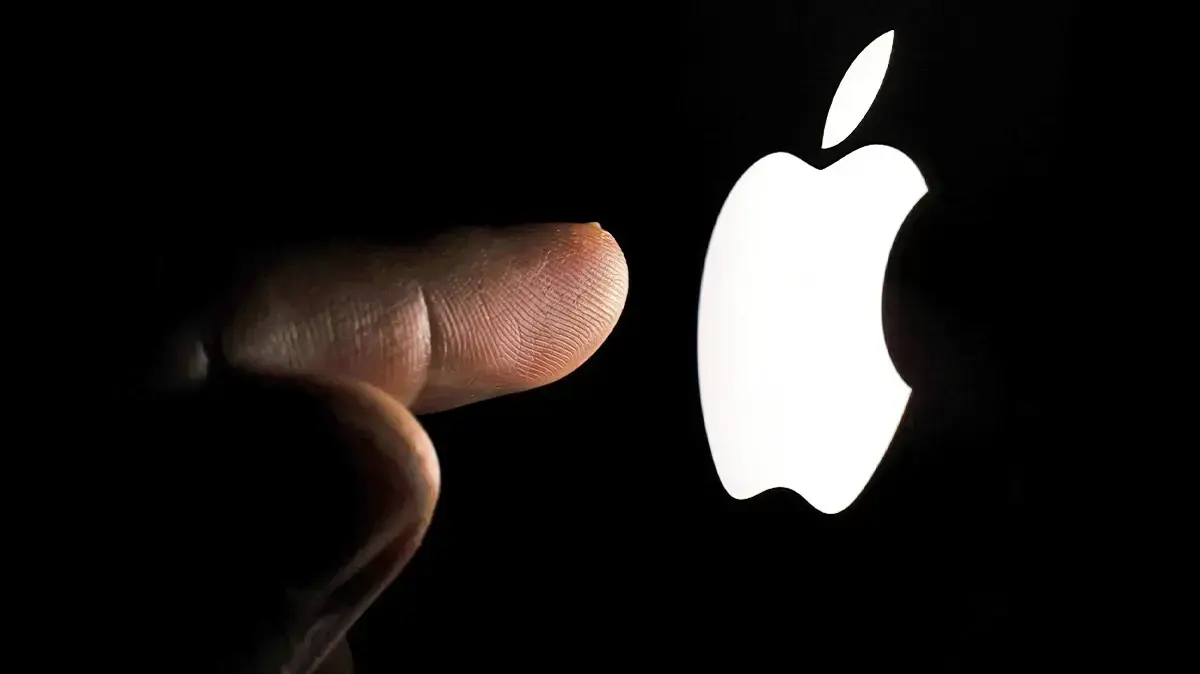Icon: enlarge
Apple CEO Tim Cook with one of the new MacBooks in Apple's canteen
Photo: BROOKS KRAFT / APPLE INC HANDOUT / EPA-EFE / Shutterstock
For the third time in a row, Apple presented new products on Tuesday evening.
After the new iPads and Apple Watches in September and the new iPhones in October, it was now the company's computers.
The company's managers presented three new computers in a previously recorded online presentation.
That alone would not have been particularly noteworthy if the company had not initiated its departure from Intel's chip technology.
As part of the event, the first computer chip developed by Apple itself, which the company calls M1, was presented.
Apple's chief of chip development, Johny Srouji, said it was only the first part of a whole series of such chips and promised true miracles.
Icon: enlarge
Johny Srouji at the presentation of the M1 chip
Photo: - / dpa
Accordingly, Apple is building the chip using five-nanometer technology, currently the finest process that enables extremely small structures.
The technology is packed accordingly on the chip.
A total of 16 billion transistors are distributed across various subsystems.
The chip has eight computing cores, four of which are optimized for performance and the other four for energy efficiency.
In addition, there are eight computing cores for the integrated graphics card as well as 16 computing cores designed for machine learning and several other subgroups.
What the new chip is supposed to do was demonstrated using the first three Macs to be equipped with the new technology, the MacBook Air, the MacBook Pro and the Mac Mini.
MacBook Air
It all started with the MacBook Air, the computer with which Apple triggered the ultrabook boom at the time.
According to Apple, the new model is three and a half times faster than its predecessor and has a graphics chip that is five times faster, which would be a remarkable leap in performance.
Especially when you consider that it doesn't need a fan and should offer up to 18 hours of video playback, six hours more than the previous model.
One of the improvements that would have been possible without the M1 chip is the integration of the new WLAN standard Wifi 6. Prices for this model start at 1100.50 euros.
MacBook Pro
Apple promises similar increases in performance for the new version of the MacBook Pro, which, thanks to the M1, is said to be 2.8 times faster than its predecessor and also has a graphics chip that is five times faster.
Here, Apple promises performance increases, especially for professional applications such as video editing and music production.
For example, it should play video in 8K resolution without errors, which shouldn't play a role in everyday life for normal users.
What would be more important, however, is the promise that it should be able to play 20 hours of video on one charge.
That would be twice as much as the previous model did.
The prices start here at 1412.45 euros.
Mac Mini
Icon: enlarge
Presentation of the new Mac Mini: In terms of design, the old one
Photo: HANDOUT / AFP
In addition to the laptops, Apple has also presented a new version of its smallest desktop computer with similar performance data.
Compared to the previous model, it promises three times higher performance and six times higher graphics performance.
Wifi 6 is also one of the innovations here.
What is particularly noteworthy about the Mac Mini is that it is cheaper, contrary to Apple practice.
With a starting price of 778.85 euros, the new model is 126.70 euros cheaper than its predecessor.
Apple wants to take two years
The company plans to take two years to switch to Apple Silcon, during which time Intel Macs will continue to be sold.
Since the new technical platform also requires adjustments to the software, Apple offers developers various options for getting their programs onto the new computers.
The simplest is likely to be Rosetta 2, a software in the operating system that translates commands for Intel processors into those for Apple chips and thus enables Intel apps to run on the new Macs.
Certain optimizations should make some apps even faster.
Icon: enlarge
The new M1 chip is said to be just the first in a series of Apple chips
Photo: APPLE INC / HANDOUT HANDOUT / EPA-EFE / Shutterstock
The next option is to package the apps so that they contain an Intel and an Apple version, i.e. run on old and new computers.
In addition, after a few adjustments, iOS and iPad apps can also run on the new Mac.
In a promotional clip, several developers were shown enthusiastically reporting how easy it was to convert their apps for the new Apple chips.
Of course, this does not seem to apply to everyone.
For example, Adobe's Lightroom is said to have already been rebuilt, but Photoshop will have to wait until next year.
Icon: The mirror








